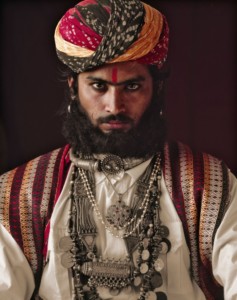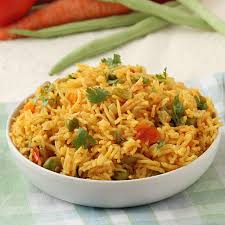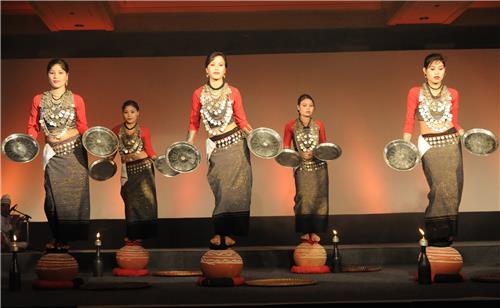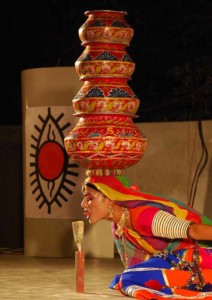India is a country which has strongly held to its roots. Even in the advancing era, it is a country which has not forgotten its culture. And here, somewhere, in the remote areas of this multicolored country live the various tribes of India which keep reminding everyone of the ancient country’s rich heritage and fantastical mythologies which enchant one’s mind leading one into the realm of wonder.
Introduction to few Tribes of India
Alas! It is not very often that people know about these tribes of India. So here, we are giving a small try at finding about these hidden world of the tribals in India who have remained unknown to you for so long.
DROKPAS: Descendants of Alexander’s soldiers
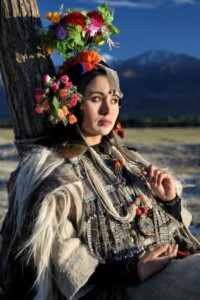 Although they have been living in India since the tribe came into being, but they are believed to be the successors of the left out soldiers of Alexander the Great. When Alexander had departed from India, many of his soldiers, tired of fighting and mesmerized by the beauty of the heavenly Earth, Kashmir, decided to settle down here.
Although they have been living in India since the tribe came into being, but they are believed to be the successors of the left out soldiers of Alexander the Great. When Alexander had departed from India, many of his soldiers, tired of fighting and mesmerized by the beauty of the heavenly Earth, Kashmir, decided to settle down here.
Also known as the Dards of Brokpa, these people look very different from both the Indians and the Nepal inhabitants. They even dress differently, with men wearing woolen coats tied around the waist and woolen trousers as well. The women too wear woolen dresses. Both the genders put on beautiful silver ornaments. Another common object of their dressing style is the bunch of flowers used to beautify their heads. Yes! The Drokpas have their head adorned with colorful flowers. But although this ritual of flowers on the head is traditional, very few people follow it on daily basis. These traditional dresses are worn only during festival hours.
They have been known to follow a number of religions, from nature worship to Hinduism to Islam.
They are a beautiful tribe glorifying the beauty of the hills. But you know, everything that shines is not gold. The men of this tribe have been known for wife swapping since ages. And although a moral crime, they carried out their lives in this manner since time unknown.
RABARIS: Shepherds of Kutch Region
Living in the Kutch region of Gujarat, the Rabaris are the cattle caretakers who had been originally hired by Mahadeva to take care of the cattle of his consort, Goddess Parvati.

 The main part of their life depends on cattle rearing. They consume a lot of milk products and carry it everywhere they go. Another source of their income is embroidery work carried out by the women of the tribe. The women wear black and their ears flaunt earrings known as Nagalis. These earrings are spiral and look like snakes, and are made of brass due to which their ear lobes are weighed down. The men wear simple dhotis and waistcoats. They put on a paghadi on their head with gold earrings in their ears and a big stick in their hands.
The main part of their life depends on cattle rearing. They consume a lot of milk products and carry it everywhere they go. Another source of their income is embroidery work carried out by the women of the tribe. The women wear black and their ears flaunt earrings known as Nagalis. These earrings are spiral and look like snakes, and are made of brass due to which their ear lobes are weighed down. The men wear simple dhotis and waistcoats. They put on a paghadi on their head with gold earrings in their ears and a big stick in their hands.
They are known to follow Hinduism, influenced by the power of Mata Devi. A popular festival in the community is Punj. If you ever visit the Rabaris, the first thing about them which will catch your eyes will be the tattoos that are carved on their arms, neck and breasts.
DHANETAH: The Embroiderers from Kutch Gujarat
 Living along the restricted areas of Kutch, the Dhanetah Jaths are followers of Islam living in complete isolation. They are mostly Sunni Muslims. Landless as they are, living in mud houses around the Banni region of Kutch. Settled in the areas around many water – holes, the Dhanetah rear cattle, with goats as an exception. They earn money from cattle farming. The other Jaths residing in the Kutch region are the Garasia, who are mainly farmers, and the Fakiranis, who devote their lives to the study of holy Koran.
Living along the restricted areas of Kutch, the Dhanetah Jaths are followers of Islam living in complete isolation. They are mostly Sunni Muslims. Landless as they are, living in mud houses around the Banni region of Kutch. Settled in the areas around many water – holes, the Dhanetah rear cattle, with goats as an exception. They earn money from cattle farming. The other Jaths residing in the Kutch region are the Garasia, who are mainly farmers, and the Fakiranis, who devote their lives to the study of holy Koran.
 Their works of embroidery are samples of real art. Tight needlework and patchwork is what they specialize in. The clothes they don are multi-colored although the men are mainly dressed in whites.
Their works of embroidery are samples of real art. Tight needlework and patchwork is what they specialize in. The clothes they don are multi-colored although the men are mainly dressed in whites.
Although following Muslim religion, they carry out Shakti pooja. They celebrate Ramzan but do not follow the custom of Tazia during Moharram. A popular belief among them is that their work is a secret art passed on to them by Maa Bamba, and hence they hang their embroidery works on the bamboo trees.
The most noticeable thing about the tribe is the unique nose ring the women wear. The women of this tribe have a large and heavy nose ring which is tied to their hair with strings.
BISHNOIS: Environmentalists from Rajasthan
 A Vaishnav sect, the Bishnois reside on the western side of Rajasthan. This tribe is popular for their culture of saving tree. As the story goes, Swami Jambeshwar once had dream, which told him that the cause of the natural calamities in his village was the indiscriminate way in which the ecological balance was being disturbed. He meditated and ordered the villagers to stop cutting down trees to protect the animals. The Bishnois are famous for beating up poachers and hunters when they tried to hunt in their area.
A Vaishnav sect, the Bishnois reside on the western side of Rajasthan. This tribe is popular for their culture of saving tree. As the story goes, Swami Jambeshwar once had dream, which told him that the cause of the natural calamities in his village was the indiscriminate way in which the ecological balance was being disturbed. He meditated and ordered the villagers to stop cutting down trees to protect the animals. The Bishnois are famous for beating up poachers and hunters when they tried to hunt in their area.
Guru Jambeshwar believed in maintaining equality between his people to eliminate feelings of envy and hatred. He ordered them to dress up in a similar fashion. All the women don red saris with fancy designs. The common jewels adorning their bodies are nose rings, bracelets and anklets. The men are spotted wearing whites.
The tale of Amrita Devi and other 350 people is famous in the region. They had sacrificed their lives to prevent the felling of trees. Felling of trees, especially khejri trees, is a major crime in their area.
The Bishnois grow millets and other staple products.
KALBELIAS: Worshipers of Snakes and art lovers
Also known as the snake charmers of Rajasthan, the Kalbelias are considered to be outcastes who even now live on the outskirts of villages. The Kalbelia dance form is considered to be very sensuous dance art. Their dance and even clothes resemble serpents. It is believed that they have descended from the 12th disciple of Guru Gorakhnath, Kanlipar.
 They mainly live around the area of Pali, Ajmer, Chittorgarh and Udaipur. They do not have permanent settlements and their lifestyle is mainly nomadic. They worship the cobra and educate about not killing snakes. It is said that when the people of the village find any snakes in their houses they call for a Kalbelia to catch it and take it out of the house instead of killing it. However, now their business of catching and performing snake arts is forbidden after the enactment of the Wildlife Act of 1972.
They mainly live around the area of Pali, Ajmer, Chittorgarh and Udaipur. They do not have permanent settlements and their lifestyle is mainly nomadic. They worship the cobra and educate about not killing snakes. It is said that when the people of the village find any snakes in their houses they call for a Kalbelia to catch it and take it out of the house instead of killing it. However, now their business of catching and performing snake arts is forbidden after the enactment of the Wildlife Act of 1972.
They now graze cattle for income. Another source of their income is dealing with herbal remedies. Performing their dance also provides them with money.
Their dance form is considered a Heritage by UNESCO.
KONYAK: Head Hunters from Nagaland
These people belong to the Naga tribe. The Konyaks belong to the regions of Mayanmar, Triap, Arunachal Pradesh and Mon district. Their tribe lives in seven different villages.
One unique feature about the Konyaks is that they are said to be the head hunters. Yes, you heard it right! The Konyaks are a war loving tribe who used to attack their neighbouring tribes. After winning over their enemies they used to cut off their heads and bring it with themselves to their village to hang it at a common house, morung. The number of heads hung by a warrior spoke of his power and experience. Another determiner of their bravery are the facial tattoos that adorn their faces every time they kill a new enemy. However, with advancement much of these practices have worn out.
The largest tribe among the Nagas, the Konyaks are otherwise much disciplined. They have many responsibilities which are strictly followed. They are very advanced too, although even now they have a king known as Augh. The Augh can marry a number of women although only the Queen’s son owns the right to the throne.
They earlier followed Hinduism, but now above 90 per cent of the Konyaks are Baptist Christians. Aoling Monyu is a major festival celebrated in their region.
LAMBANI: Nomads from Andhra and Kerela
The Lambani, nomads of Andhra, Karnataka, Tamil Nadu, Kerala and Goa, who had migrated during the Mughal reign have now found settlements.
Followers of Hindu religion the Lambanis celebrate festivals like teej, gangour and Sheetlapooja. They are also nature worshipers and many of their Gods and Goddesses are the different forces of nature. Another major power they pray to is Goddess Durga and her different incarnations. They even celebrate Dusshehra, Diwali, Sankranti, Shivratri and Holi. Another popular belief among them is of animal sacrifice. If they are struck by any natural calamity they take it to be the result of the rage of the Gods. Hence, they offer animals in order to appease them.
 You can easily spot the Lambani women wearing brightly colored ghagras (skirts), kanchali (blouses) and odhnas (veil cloth). Their clothes are richly embroidered and bear motifs with glass mirrors, beads and small conch shells. The men are seen in dhotis and short trousers and turbans.
You can easily spot the Lambani women wearing brightly colored ghagras (skirts), kanchali (blouses) and odhnas (veil cloth). Their clothes are richly embroidered and bear motifs with glass mirrors, beads and small conch shells. The men are seen in dhotis and short trousers and turbans.
APATANI: Tattoo stylists from Andhra

 Living in the Andhra region of India, the Apatanis are a small tribe living in the Apatani valley. This valley has been declared a World Heritage Site by UNESCO. The main occupation of the people here is cattle rearing and agriculture.
Living in the Andhra region of India, the Apatanis are a small tribe living in the Apatani valley. This valley has been declared a World Heritage Site by UNESCO. The main occupation of the people here is cattle rearing and agriculture.
These were former hunters but had to stop this act since the ban on hunting was enacted. Now they earn a living by cultivating rice and other agricultural goods.
Another very noticeable feature among the Apatanis is their style of tattooing. They have a systematic manner of tattoo art, different for both the sexes. They also wear large nose rings known as Yaping Hullo. The women of this tribe are considered to be the most beautiful ones as compared to those of the other tribes. Other than this they are mainly very simple people with simple dressing styles.
MISHMI: Successors of Eagle
 Also known as the Deang, the descendants of this tribe are known to be born from a man who had tied knots with an eagle. Being the successors of an eagle they have been strong hunters and have spent their life, in fact,
Also known as the Deang, the descendants of this tribe are known to be born from a man who had tied knots with an eagle. Being the successors of an eagle they have been strong hunters and have spent their life, in fact,
are still living in harmony with the barter system as their system of accounting.
They depend upon agriculture to sustain their livelihood. They rear cattle too. However, they are nomadic and don’t settle at a place for long. They do not have an administrative system like the other tribes. All the families are autonomous.
The Mishmis are divided into three sub-divisions known as Idus, Mijus, and Digarus. They grow corn, buckwheat, barley, and wheat. They are artistic people and their women are known to be skilled weavers. They make beautiful blouses and dresses. They are mainly well disposed towards other tribes.
REANG: Tribes with Modern thoughts
 Reangs are the second largest tribe in Tripura, after the Tripuris. They come under the scheduled tribe category, according to the Indian Constitution.
Reangs are the second largest tribe in Tripura, after the Tripuris. They come under the scheduled tribe category, according to the Indian Constitution.
Although known as the scheduled tribe, these people are very advanced; they have banned child marriage and support widow re-marriage. Close-relationship marriage is not thought bad of, but close cousin marriage might be a matter of pure chance.
They were originally Vaishnavs, worshippers of Lord Vishnu, but now an increasing population is turning Christian.
The Reangs are divided into Meska and Molsoi sub-tribes, which are further divided into seven and six tribes respectively.
The Reang men are seen wearing a loincloth as lowers and a piece of cloth is used to wrap around the upper half of their body. The women don a long cloth known as the Rnai, which wraps their bodies from waist to knees. The Risa is used to cover their chest and Rikatouh covers their whole upper body. Flowers and silver ornaments beautify their bodies, with necklaces with silver coins attached to it, being a specialty.
These different tribes have survived the old and the new centuries and have chosen to stay put on conserving their culture and traditions. These tribes not only form a pathway for us to reach into our history, but they also form a very important part of India’s identity. They give the country the label of multicolored and multilingual in the true sense of the terms. These are those living preserved cultures and rich heritage of the country which shows off how diverse the country is. Without them, the real identity of the country will no longer be alive. And since the cultures from other countries are being rapidly adopted, there is an urgent requirement for us to preserve ours too. Losing our culture to gain someone else’s will be a sad loss. But these tribes might still give us access to the past, providing us with the refreshing knowledge of how time in our country began.

